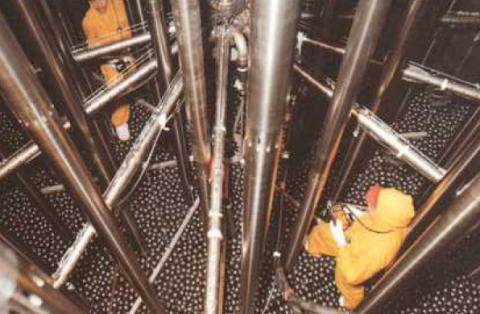In the safety analysis of high temperature pebble-bed nuclear reactors (PBR), one of the next generation nuclear reactor designs, great computational challenges are presented due to its unique design features. In PBR, tennis ball-sized spherical fuel pebbles are loaded and circulating through the reactor core region under the pressure of high speed helium or fluoride salt coolant flow around each pebble. Interactions of pebble-to-pebble, pebble-to-coolant and pebble-to-reflector wall result in a complicated coupled pebble flow and coolant flow process in PBR. This process is further complicated by the reactor power and temperature distributions, which have strong effect on pebble friction coefficient and coolant flow viscosities. To predict local power and temperature distribution accurately, especially under severe accident scenarios, high fidelity simulation of fully coupled pebble flow and coolant flow in PBR is needed. The development of new methodology used in this high fidelity simulation can significantly improve the current reactor safety prediction capability and provide the safest design margin for PBR.

Our research team has developed a high-fidelity code PEBble Fluid Dynamics (PEBFD), which tightly coupled two advanced computational methods, the discrete element method (DEM) and the computational fluid dynamics (CFD) method, to model the pebble flow and high-speed coolant flow simultaneously. A realistic simulation of pebble dynamics, including initial fuel loading process, dynamic fuel flowing (upward or downward) process, and fuel discharge and reloading process, in cylindrical and annular core designs in high temperature pebble-bed reactor designs has been implemented. A series of verification and validation have been done by comparing the results with other literature and experimental results. Critical safety design parameters, such as pebble distribution, void fraction (porosity) distribution, coolant flow speed distribution, etc. used for full core neutronic/thermal hydraulic analysis, can be provided using the developed code.